Streyauthe

Streyauthe is an alternative alphabet for Standard American English
invented by Bryn Kennan. He created it primarily for art’s sake, however
it could easily be adapted for other purposes such as ESL instruction or
everyday written communication.
The Streyauthe script can be written in any direction and is composed of
rows of glyphs which represent syllables. Each syllable glyph is in
turn composed of symbols representing the dialect’s phones.
Consonant clusters are generally indicated by overlapping the
symbols of the respective consonants.
Streyauthe script
Syllable types
The base unit of speech encoded by a Streyauthe glyph is the syllable
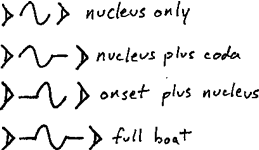
Syllable nuclei
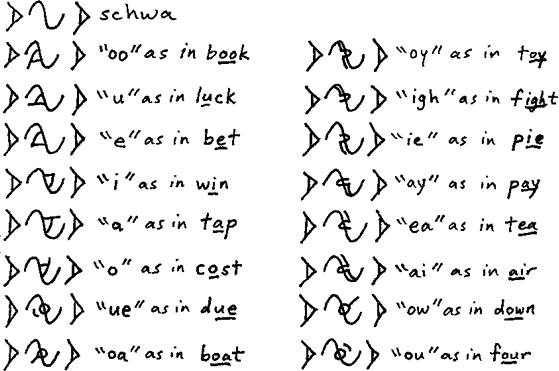
Consonants
The is one consonant sound that, if it is present in a syllable, only
ever appears at the very beginning of the onset (rendered as “H” in Roman
script). Two others, “W” and “Y” only ever appear just before the nucleus.
Therefore, these sounds are represented in Streyauthe script as:

“R” and “L” only ever appear just before or just after the syllable nucleus. They are realised in Streyauthe as:
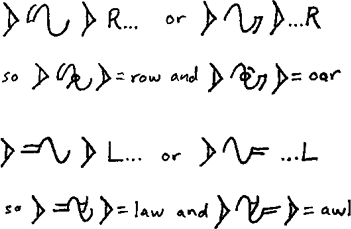
Note that in the onset, “R” and “L” are marked above the centreline, while in the coda they are marked below it.
All other consonants are indicated by symbols which remain the same whether they appear in the onset or the code.
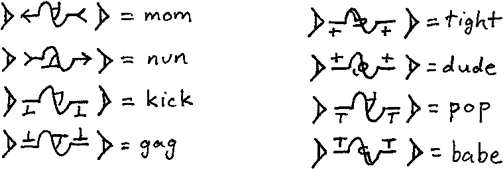
Bearing this in mind, the last eight consonants can be found in the following words

Conjunct consonants

These are some of the most common consonant clusters. Others can be respresented by overlapping or otherwise modifying the basic consonant symbols.
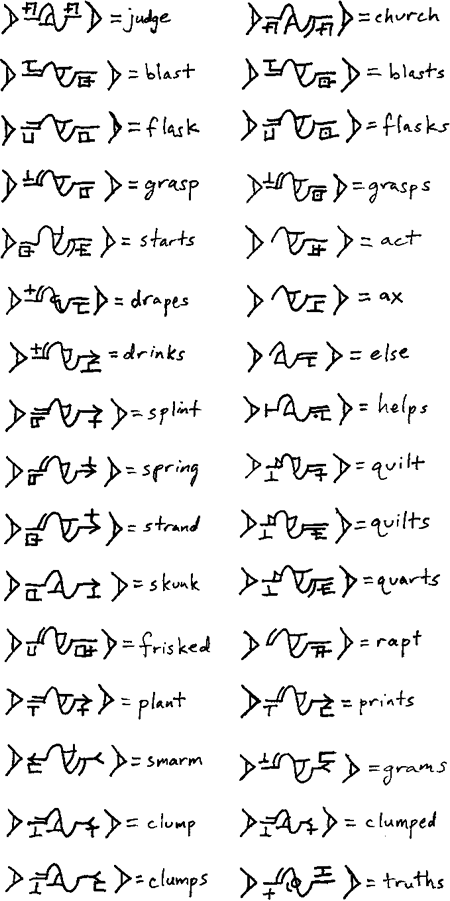
In order to write Streyauthe text, simply string the syllables together, as in speech.
Sample text

Translation
All human beings are born free and equal in dignity and rights. They
are endowed with reason and conscience and should act towards one another
in a spirit of brotherhood.
(Article 1 of the Universal Declaration of Human Rights)
